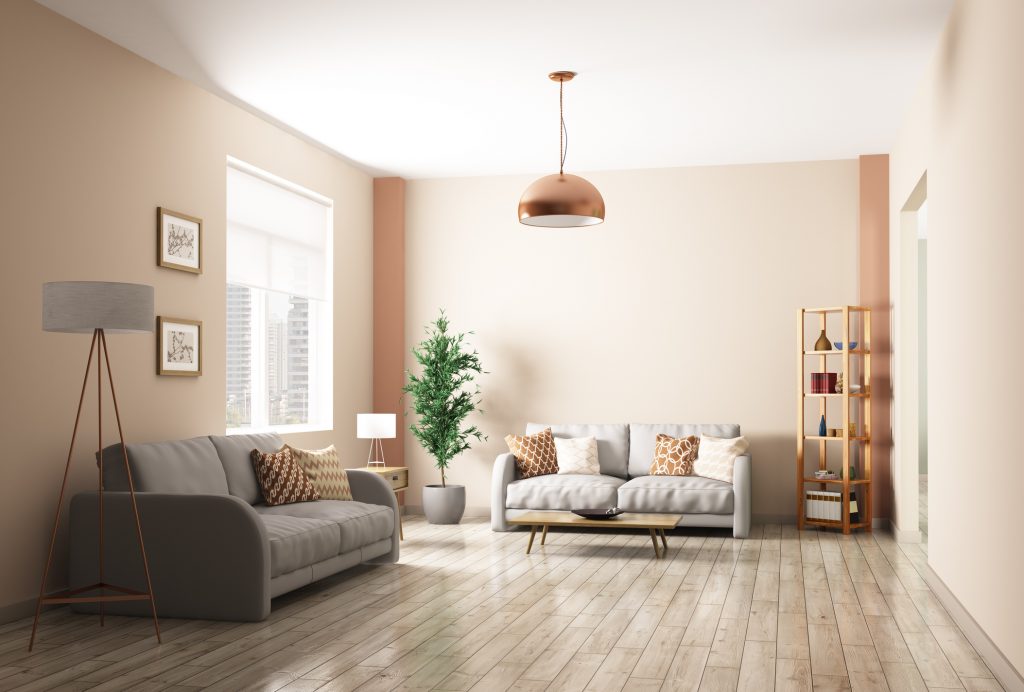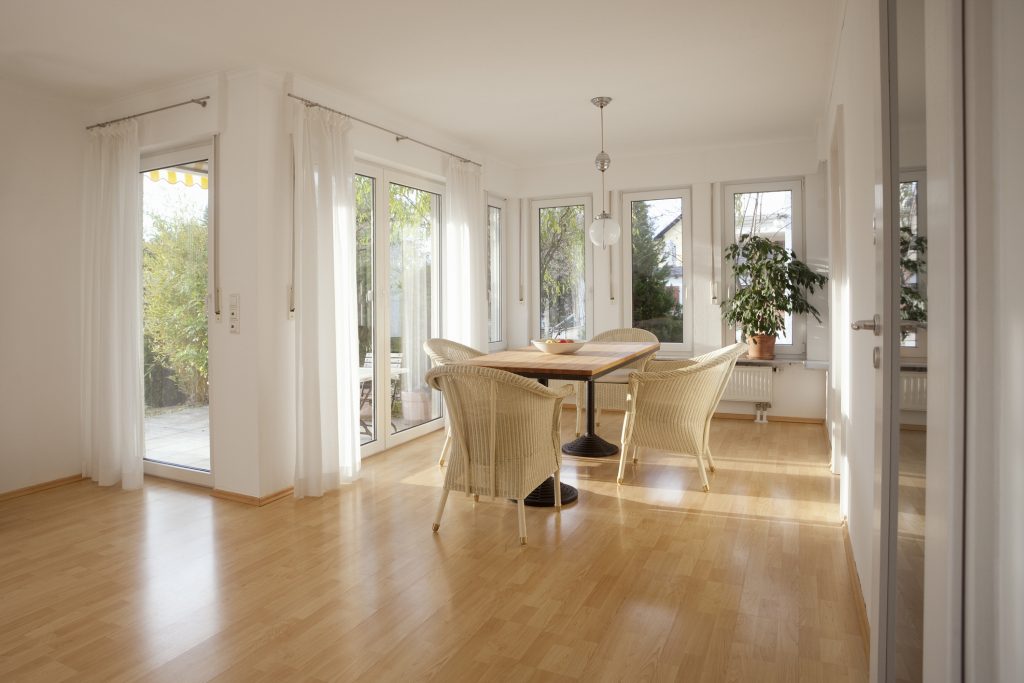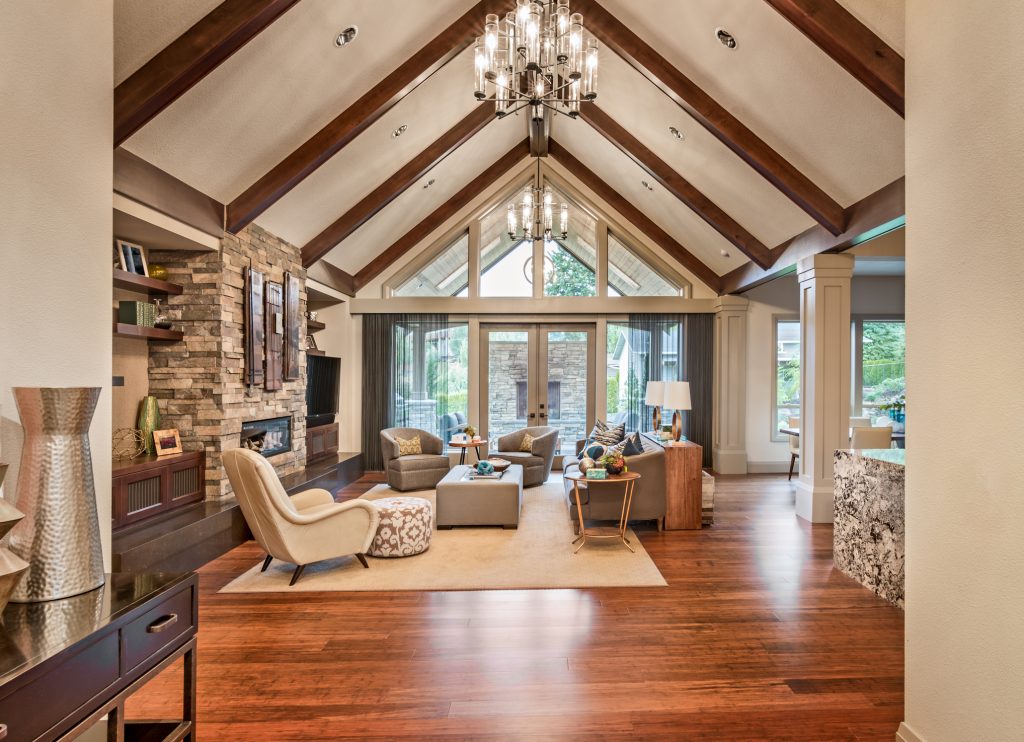How to Choose the Right Stain for Your Hardwood Floors
Many of the decorating decisions we make are fun and creative, but when it comes to deciding on something big — like the right stain for your hardwood floors — it’s often more stressful than fun. Making the wrong choice can mean you’ll have to shell out more time and money to have it changed, or simply live with results you’re not crazy about on something you’ll see every day for years to come.
First and foremost, don’t rush your decision. Take your time and ask yourself a few questions. The answers you come up with will be a big help in choosing the right stain for a floor you’ll really love.
Question 1 | Which do you prefer: contrast between walls, ceiling and floor, or overall room brightness?
Remember, hardwood floors with a darker stain will provide great contrast for things like light coloured walls, upholstery and even area rugs, and will look rich, but will also absorb light, making the room look darker. This may not be an issue in a room that’s flooded with light during the day and has good artificial lighting by night, but the results could look too heavy in a room with only north-facing windows.
Question 2 | Are you concerned with how your choice will affect the resale value of your home?
If you are, you’re probably better off sticking with a neutral, neither too light nor too dark, colour that will appeal to lots of people. But if you plan on staying in your home for a long time, then go ahead choose any colour that pleases you and reflects your style.
Question 3 | Do you have pets and/or kids?
Pets shed, so you might want to take the colour of your pet’s coat into consideration when choosing a colour for your floor. If you’ve got a light coloured cat, light coloured hardwood floors will hide her hair better than a dark one, and vice versa. Similarly, if you’ve got kids that are dropping crumbs, stirring up dust, and leaving sticky handprints in their wake, light coloured hardwood floors will hide daily dirt and smudges better. Dark stained hardwood floors will require a dust-mopping and spot cleaning more often than light ones because, much like a shiny black car, scratches and smudges are far more apparent on dark surfaces.

Question 4 | What type of wood are you staining?
Different species of wood will take stains differently. For example, if you’re staining a red oak floor, there will be red tones in whatever colour stain you settle on. This is where getting an expert’s opinions will help. Also, it’s a good idea to try the stain you are considering on a few sample pieces of the wood you’re installing or refinishing. This way, you can see how the outcome will look on your hardwood floors before making any big changes. You’ll get a far more accurate idea of what the finished look will be by staining a sample piece of your flooring versus simply going by the sample-photos provided in a pamphlet.
Once You’ve Answered the Above Questions, Consider the Following as Well

Light colours, either cool toned or warm toned, can add brightness and an open, airy feeling to any room.

Mid-tones are traditional and help cover blemishes in the wood.

Dark stains will provide contrast, drama and richness to a room.
Just About Finished
Choosing how to finish your hardwood floors once they’ve been installed or re-sanded and stained requires as much consideration as choosing a stain colour. Here’s a list of your options, plus their respective pros and cons.
- Water-Based Polyurethane: A water-based polyurethane is easy to apply, low odour compared with oil-based polyurethane and doesn’t yellow as much either. However, it’s also more expensive than oil-based polyurethane and not quite as durable.
- Oil-Based Polyurethane: An oil-based polyurethane finish is also easy to apply and is a lot more durable than any other finish you could choose. As mentioned above, it’s also less expensive than its water-based counterpart, and is often favored for it’s low-sheen natural finish that showcases the characteristics of the wood grain. However, it takes a long time to dry: 8 to 10 hours for each coat, and some oil finishes tend to yellow as they age and can off-gas very strong fumes that can last for days.
- Penetrating Oil Sealer: This is a finish that DIYers can easily do themselves. It’s non-toxic, low odour and imparts a mellow sheen to your wood floor. That said, it’s not as durable as a polyurethane finish and must be reapplied every two to three years. Rubio Monocoat Oil is a great environmentally-friendly and VOC-free option that offers durable colour and protection of your hardwood floors in one, single-layer application.
Properly Prepared
If you’re re-sanding and re-staining old hardwood floors versus a new installation, you’ll want to take the time to properly prepare your hardwood floors before you refinish them using a quality product such as this Penetrating Floor Prep by Woodpecker that’s specifically designed to deep clean and prepare hardwood floors before refinishing.
Good Choices Really Pay Off
It’s truly amazing how new hardwood floors with a colour and finish you really like can update the look of any room. And armed with theses answers to your hardwood stain and finish questions, you’ll be rewarded with beautiful hardwood floors that will serve you well for years to come!
If you live on Vancouver Island and would prefer the convenience and peace-of-mind of having experts you can trust install, re-sand or refinish your hardwood floors for you, our flooring experts offer a variety of flooring installation and refinishing services.
If you’re a DIYer looking for help in choosing the right hardwood flooring, stain and finish for your home on Vancouver Island, be sure to contact us at The Finishing Store. We have locations in Victoria and Nanaimo, and carry top quality flooring and a wide variety of stains and floor finishing choices. Our experts are happy to answer any questions you might have and help you select the right products for your home projects.
